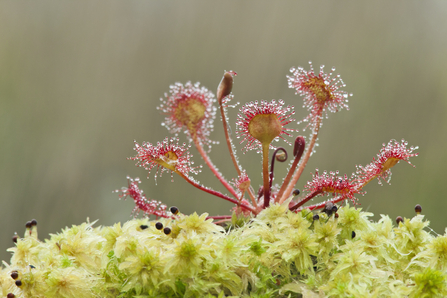The projects will help create, restore and connect places for wildflowers, trees and wildlife, where the environment has been impacted by activities from previous road building. Natural solutions such as wetlands and reedbeds will help filter polluted run-off from roads.
The projects include:
- Creating pollinator networks along the A56-M65 corridor
- The restoration and enhancement of Red Moss a rare area of lowland raised peat bog adjacent to the M61
- Helping to create a nature recovery network in the peatlands of Greater Manchester
Each of these are areas where the environment has been impacted by activities from previous road building.
Alan Wright, Campaigns Manager at Lancashire Wildlife Trust, said: “We are delighted to have been awarded this vital funding. We live in one of the most nature depleted countries in the world. Our region has lost of 98 per cent of our lowland raised peat bogs, and nationally 97 per cent of our lowland meadows have disappeared, areas which once hummed with the buzz of bees, and beautiful butterflies. Wading birds like curlew and lapwing, which rely on healthy wetlands are on the red list and water voles are struggling in polluted rivers.
“The Network for Nature funding will make a real difference to our wildlife. For example, roadside verges through East Lancashire are being transformed into wildflower wonderlands, providing a haven for our vital pollinating insects. And across Greater Manchester, restoration works have already helped to re-connect our precious remaining but isolated fragments of lowland raised peat bog, allowing the wildlife that calls them home to become more resilient.”
Lancashire Wildlife Trusts’ are just three of 26 projects which form the Network for Nature programme.

